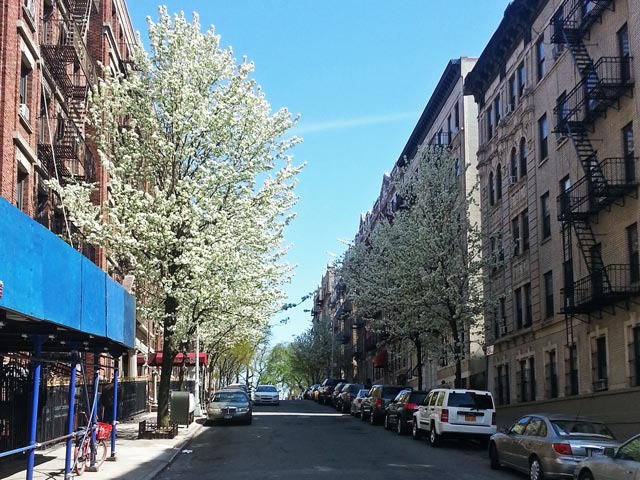For about a century — since the tenement laws forbid the construction of the old railroad and dumbbell apartment buildings — for-profit, market-rate builders in New York City have largely shunned the poor. The city is still teeming with poor people, of course, because of a phenomenon known as housing filtering, whereby homes “filter” down over time from people with the means to afford new construction to people with lower incomes, who cannot.
It’s undeniable that this is how New York has traditionally housed its poor (and, increasingly, middle class). Big apartments uptown were carved into smaller, more affordable units after the Great Depression; starting with white flight in the 1960s, middle-class Jewish and Italian buildings in the Bronx filtered down to less wealthy African-Americans and Latinos.
But the specifics of filtering – in the absence of white flight and complete economic collapse, is it still happening? is it a viable way to provide affordable housing? – are hotly debated, with people staking out positions that seem to be based on preconceived ideological notions rather than real evidence.
A paper published earlier this year by Syracuse professor Stuart S. Rosenthal won’t put an end to debates on housing filtering, but it does shed some light on this fundamental but poorly-understood feature of housing economics.
The paper reaffirms the obvious, which is that filtering is real, with Rosenthal writing that one of his basic findings “provides direct evidence that housing filters down, on average,” saying “there should no longer be debate on this point.” The question then becomes the exact rate at which homes filter down to lower-income families.
After employing a more advanced model, Rosenthal finds the filtering rate – how fast a newly-arriving family’s real income falls for each year of a house or apartment’s life – is much faster than the standard 0.5 percent (or less) rate of rent depreciation. Nationwide, he finds it to be 0.5 percent a year for owner-occupied housing, but anywhere between 1.8 to 2.5 percent each year for rental units, depending on the region, with faster filtering rates for areas with slower housing price growth. Since owner-occupied units tends to turn into rentals as they age, the overall nationwide filtering rate from 1975 to 2011 worked out to 1.9 percent a year in real terms.
“At that rate,” he writes, “the real income of an arriving occupant in a 50-year-old home would be 60 percent less than the income of an occupant of a newly built home.”
New York City is surely home to one of the most inflationary housing markets in the country, meaning filtering is slower here than elsewhere, but Rosenthal’s paper provides some hints on how to speed it up. Moderating housing cost hikes (perhaps by ramping up housing production citywide) would be best, as it would speed up the filtering process, but the city can also encourage the development of rentals, so that filtering starts at a faster pace from day one.
Realistically, this means zoning for more development at lower price points in the outer boroughs, since lower prices there make rentals more viable than in condo-crazed Manhattan. And because buildings in the outer boroughs – especially the farthest reaches, in places like the northern Bronx, eastern Queens and southern Brooklyn – start at lower price points, catering to those outside of the city’s 1 percent, they also reach even lower income percentiles faster.
Rosenthal also finds some relevance for those devising housing subsidy programs:
For housing assistance advocates a message is to take seriously the market’s ability to generate lower-income housing, especially among rental units. This lends support to housing voucher programs that rely on market supplies of affordable housing but with the caveat that filtering is less pronounced in areas subject to high rates of house price appreciation.
New York City definitely has a high rate of price appreciation, but “less pronounced” is not nonexistent. Since housing still becomes cheaper with time, inclusionary housing policies that effectively buy newly-built units for lower-income New Yorkers (and pay for it by granting developers tax subsidies and, increasingly, density bonuses) are an inherently ineffective way for the city to subsidize housing.
Not only do vouchers make the housing subsidy process more transparent – if the costs were more obvious and paid in cash rather than in-kind, politicians would be far less likely to burn money by doing things like handing out 90 percent discounts on ultra-luxury rentals in West Chelsea – but they also allow the money to be spread farther by taking advantage of older units’ lower subsidy requirements.
For any questions, comments, or feedback, email newyorkyimby@gmail.com
Subscribe to YIMBY’s daily e-mail
Follow YIMBYgram for real-time photo updates
Like YIMBY on Facebook
Follow YIMBY’s Twitter for the latest in YIMBYnews





